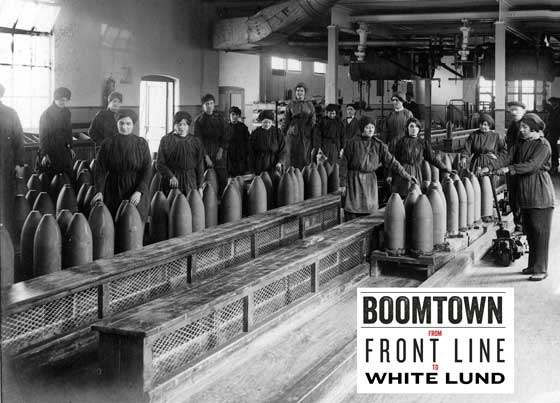The Great War Centenary
1917 - ExhibitionBoomtown - From
Front Line to White Lund
How did the fire start?

‘Death in all cases was due to injuries
accidentally received whilst carrying out their duties in a National
Factory during a fire there being no evidence to show how the fire
originated.’
Coroner’s verdict
There have been many theories of how the fire started that led to the
explosions at White Lund.

TNT ignited spontaneously …
Although the filling rooms at White Lund were kept warm, because of the
sensitivity of the explosives, this was dismissed by Colonel Barlow
investigating the fire.
Someone smoking nearby and threw a lighted match or cigarette end
onto the TNT…
Workers were searched for cigarettes and matches on entering White Lund.
Even so, men and women were caught with them and prosecuted. Between
July 1917 and October 1917 there were 50 convictions for possessing
smoking materials including matches, cigarettes, a pipe and tobacco.
Punishments were severe and could mean prison. Ada Williams, aged 18
years, from Oldham was fined £5 in February 1917 after being found with
a part smoked cigarette in her pocket. The local paper reported that the
case was brought ‘…in consequence of the heavy amount of smoking in the
case of young girls at the factory. There had been smoking recently at
the rear of a change house. They must protect the factory and the town.’
Attacks from a Zeppelin
Britain had suffered a range of attacks from German Zeppelin airships
from January 1915. Morecambe had experienced its own scare in April when
the Corporation siren had sounded after the alarm was raised by a
Special Constable and a group of soldiers outside the Grand Hotel, who
were convinced they had seen an ‘engine of destruction’ hovering over
the bay in the direction of Ulverston. Whilst these raids had focussed
heavily on London there had been a serious raid on York in May 1916,
killing 9 people. Zeppelins remained a very real fear.
Sabotage
At the request of the Ministry of Munitions, Scotland Yard detectives
were sent up ‘to investigate the possibility of the disaster having been
due to malice’. Options for who might be to blame included:

From a German spy…
Little effort was needed to keep the public suspicious of foreigners. In
an article in the Lancaster Guardian 50 years after the explosions,
George Pedder gave his view on the culprit. ‘There was a man who looked
after the TNT store whom I swear was a German spy. He was a little man
who had a black patch over one eye and he was always the last to go to
the canteen.’ Mr Pedder was convinced this man could have concealed
matches under his eye patch. However, there were no registered ‘aliens’
on the staff and the Works Police did not take the matter seriously.

From Irish militants …
After the Easter Rising of 1916, aimed at ending British rule and
bringing about the Republic of Ireland, there were concerns about the
allegiance of Irish people in England. Indeed background checks with the
Royal Irish Constabulary were recommended for all possible Irish
employees and that anyone with Sinn Fein sympathies should be
‘rigorously excluded.’
?
Or was it something else?
© Images are copyright, Trustees of the King's Own Royal Regiment Museum.
You must seek permission prior to
publication of any of our images.
Only a proportion of our collections
are on display at anyone time. Certain items are on loan for display
in other institutions. An appointment is required to consult any of
our collections which are held in store.





